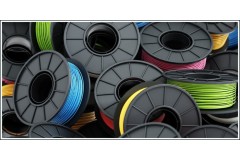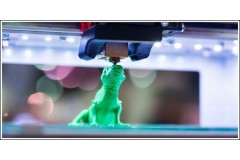
Fused Deposition Modeling (FDM) is a popular method of 3D printing that offers versatility and accessibility. However, one of the challenges faced by FDM enthusiasts is ensuring proper adherence of PLA (Polylactic Acid) or ABS (Acrylonitrile Butadiene Styrene) filament to the bed plate during printing. Poor bed adhesion can lead to warped prints, failed prints, and wasted materials. In this article, we will explore effective strategies to improve the adherence of PLA or ABS on the bed plate in FDM 3D printing.
1. Bed Leveling and Calibration:
Proper bed leveling is crucial for ensuring a uniform and consistent first layer. An uneven or improperly leveled bed can result in inconsistent adhesion. Follow your printer's instructions to calibrate the bed accurately. Use a leveling tool or paper to ensure there is an optimal gap between the nozzle and the bed. This step sets the foundation for successful bed adhesion.
Clean the Bed Surface:
Before each print, ensure that the bed surface is clean and free from any debris, oils, or residues. Use isopropyl alcohol or a mild detergent to clean the bed. Avoid using acetone for ABS, as it can lead to the formation of micro-cracks. A clean bed surface promotes better filament adhesion.
2. Bed Temperature:
Proper bed temperature plays a significant role in improving adhesion. PLA typically adheres well to a heated bed temperature of around 60°C to 70°C, while ABS requires a higher bed temperature ranging from 90°C to 110°C. Adjust the bed temperature settings in your 3D printer software accordingly to achieve the best results.
3. Filament Type and Temperature:
Different filaments have varying ideal printing temperatures. Ensure that you are using the appropriate temperature for the specific filament you are working with. Check the manufacturer's guidelines for the recommended temperature range. Adjusting the extruder temperature can significantly impact the filament's bonding with the bed surface.
4. Bed Surface Treatment:
Several bed surface treatments can enhance adhesion for PLA or ABS filaments. Here are some popular options:
a. BuildTak or PEI Sheets: These sheets provide a textured surface that improves adhesion. PLA tends to adhere well to BuildTak, while ABS adheres to both BuildTak and PEI sheets.
b. Glass Plates with Adhesives: Applying a layer of adhesives such as hairspray, glue stick, or specialized adhesion sprays like 3D lac or Kapton tape on a glass plate can provide a reliable adhesion surface. Experiment with different adhesives to find the one that works best for your specific filament.
c. Blue Painter's Tape: Applying blue painter's tape on the bed can create a suitable surface for PLA or ABS filament adhesion. It is cost-effective and easily replaceable.
5. Raft or Brim:
When printing with ABS or PLA, utilizing a raft or brim can improve bed adhesion. A raft is an additional layer printed beneath the object, while a brim is a thin, extended perimeter around the object. Both techniques increase the surface area in contact with the bed, promoting better adherence.
6. Slow Down Print Speed for the First Layer:
Reducing the print speed for the first layer allows the filament to adhere more effectively to the bed. Slowing down the initial layer speed gives the filament time to melt and bond with the bed surface. Adjust the print speed settings in your slicing software specifically for the first layer.
7. Enclosed Print Chamber:
For ABS, using an enclosed print chamber can help maintain consistent temperature and reduce the chances of warping. Enclosing the printer prevents heat fluctuations and drafts, which can affect bed adhesion.
8. Cooling Fan Control:
While cooling fans are essential for PLA prints, excessive cooling during the initial layers can impact bed adhesion. In your slicing software, adjust the fan speed to a lower value or disable it for the first few layers to allow for better adhesion.
Conclusion:
Achieving proper bed adhesion is crucial for successful FDM 3D printing with PLA or ABS filaments. By following the tips mentioned in this article, including proper bed leveling, surface treatment, temperature control, and print speed adjustments, you can significantly enhance the adherence of PLA or ABS on the bed plate. Experimentation and fine-tuning of these techniques will enable you to achieve consistent and high-quality prints, expanding the possibilities of your FDM 3D printing projects.



